Internal Fixation: Rods and Nails
What are rods and nails?
Rods and nails are long cylinders that are made of surgical grade metal (stainless steel or titanium). These devices are inserted inside the marrow cavity of a long bone (tibia, femur, humerus, or forearm bones). They are also called intramedullary (IM) devices, as they go inside of the bone. The doctor may interchangeably refer to rods and nails as internal, intramedullary, or IM devices.
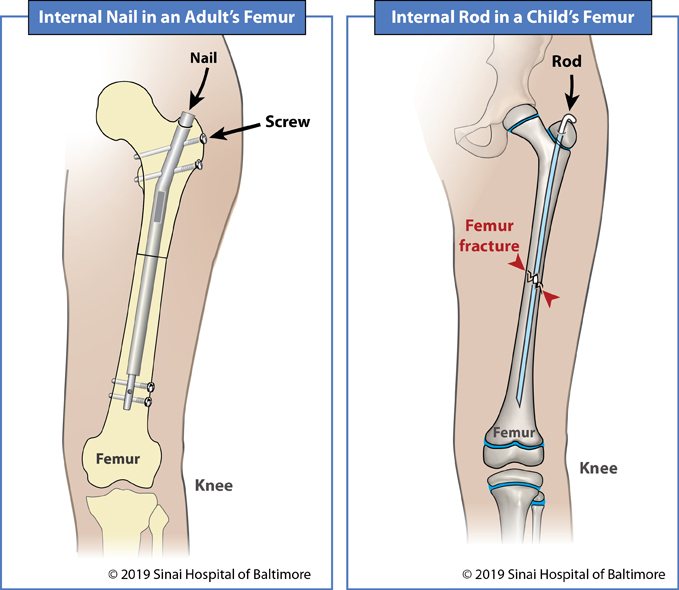
When are rods or nails used?
Nails can be used to lengthen bones or to assist with lengthening bones. A nail or rod can be used to stabilize a bone after deformity correction or after a fracture so that the bone is held steady and protected while it heals. Special types of nails and rods can also be used to deliver antibiotics to an infected bone.
What is the difference between a rod and a nail?
Nails and rods are both inserted into the center of the bone, but only nails are attached to the bone with cross bolts or locking screws. A nail has small holes drilled at both ends of the nail. Bone screws or pins are inserted through these holes and are then attached to the bone. They increase the stability of the nail inside the bone.
Rods are inserted inside the bone but are not attached to the bone with bone screws or pins. Rods tend to be more flexible and thinner than nails. Depending on the clinical scenario, our surgeons may use Rush rods and/or antibiotic cement-coated rods.
How is a nail or a rod inserted into the center of a bone?
First, the doctor needs to make space for the device to fit inside the bone. The outer part of a bone is made up of hard tissue, but the inside of a bone is made up softer marrow tissue. The doctor will use an orthopedic drill to create a canal in the marrow cavity in the center of the bone. This canal will be large enough for the nail or rod to fit inside it.
The way the rod or nail is inserted depends on the bone and the patient’s unique situation:
- For the femur (thigh bone), the device may be inserted in two different ways:
- Through the top of the femur that is closest to the hip (inserted from the hip towards the knee).
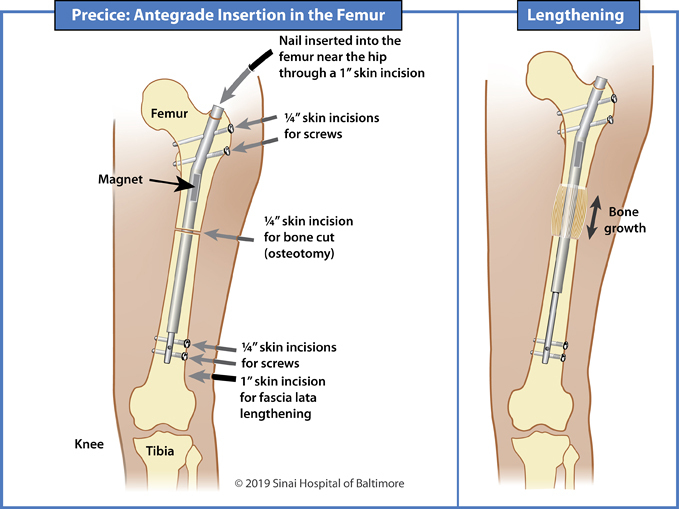
- Through the bottom of the femur that is closest to the knee (inserted from the knee towards the hip).
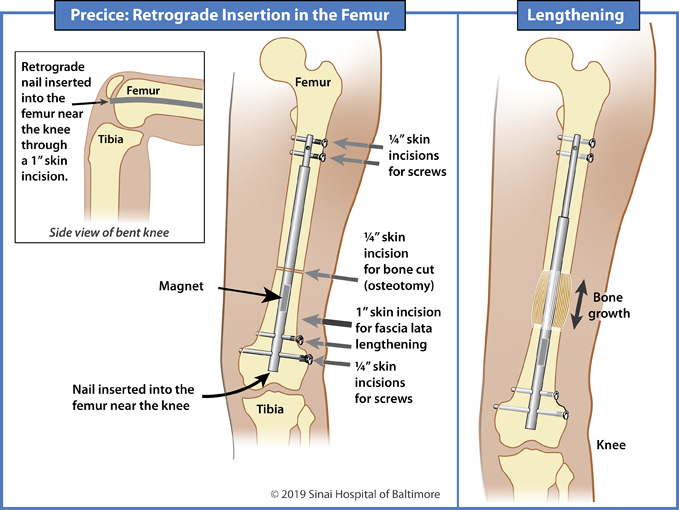
- For the tibia (shin bone), the device will almost always be inserted through the top of the tibia that is closest to the knee (inserted from the knee towards the ankle).
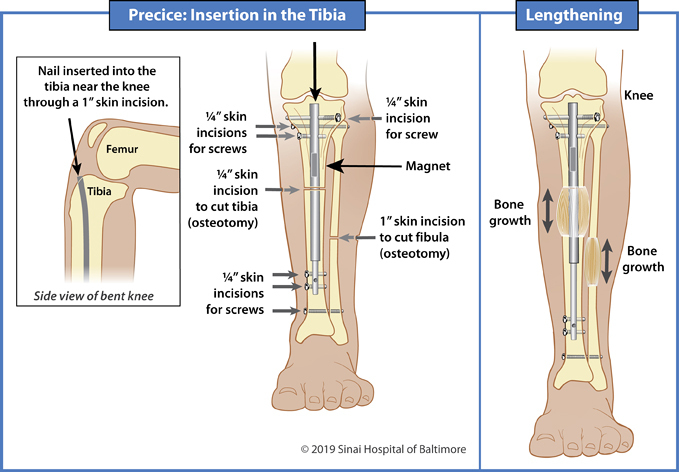
- For the humerus (upper arm bone), the device will be inserted through the top of the humerus that is closest to the shoulder (from the shoulder towards the elbow).
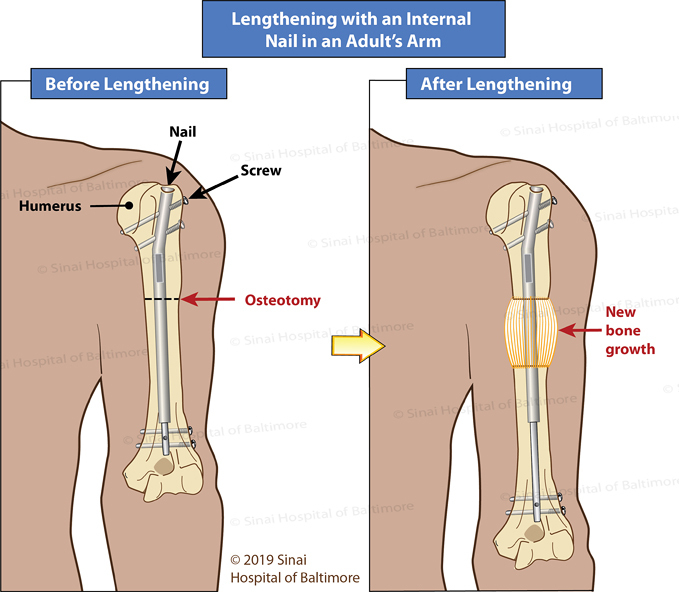
What are the advantages of using a rod or nail?
Rods and nails support the bone while it heals, which allows patients to put weight on the leg or arm faster. Putting weight on a bone promotes bone healing.
Will inserting a rod or nail damage the bone marrow?
It will damage the bone marrow in that bone, but it will not affect the body’s ability to create new red blood cells or immune cells (e.g., T cells). People have many bones that contain bone marrow. After the rod/nail is removed, the bone marrow in the bone that underwent treatment will regenerate itself.
Is it necessary to remove rods and nails after treatment?
Once the bone has fully healed, the rod/nail no longer serves a purpose and may be removed. This is typically done a year after the original surgery and can be an outpatient procedure (i.e., the patient does not stay in the hospital overnight after surgery). In certain situations where there is an underlying bone disease that makes the bones at risk for fracture throughout life (rickets, osteogenesis imperfecta, congenital pseudarthrosis of the tibia) it may be preferable to leave the rod/nail inside the bone permanently to prevent re-fracture.
